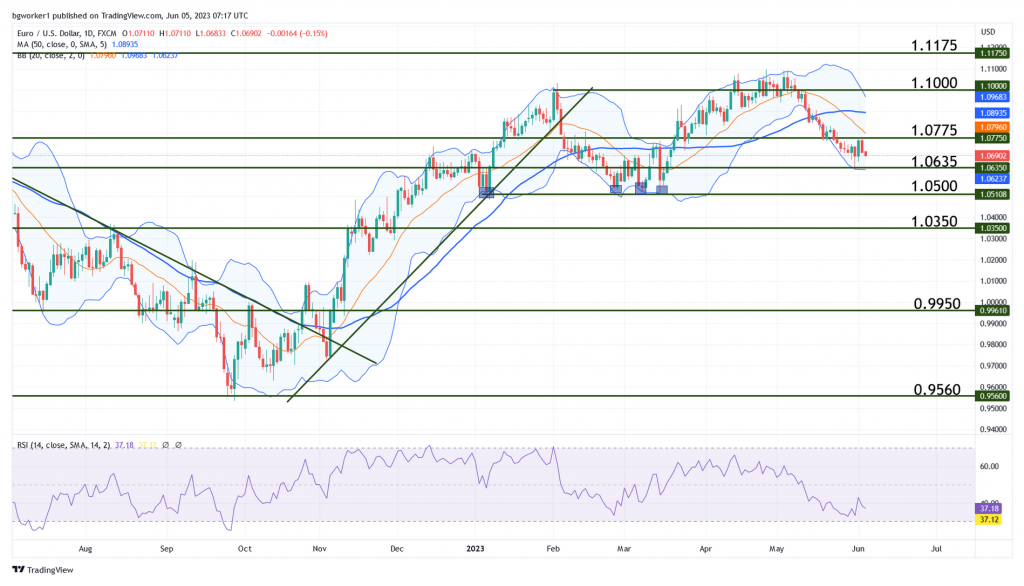Economic Strength Challenges Dollar’s Current Trend
NFP Data Defies Expectations, Keeping the Dollar Resilient and Interest Rates Unchanged.
The Non-Farm Payrolls report created some ruckus once again, blowing the consensus figure out of the water: 339K new jobs created in May versus 193K expected. This shows that the economy is still strong and other recent data, like consumer spending and new home sales, has also undermined the idea that the Federal Reserve will lower interest rates anytime soon.
Last week, Fed officials indicated that they are likely not going to raise interest rates at their upcoming meeting in June, but they’re keeping the possibility open for future increases. Meanwhile, in Europe, the President of the European Central Bank, Christine Lagarde, said that they need to tighten their monetary policy further, which would actually make the US Dollar less appealing versus the Euro.
The DXY increased by 2.5% from its recent low compared to a group of different currencies and is currently at one of its highest levels since March. Despite this, some bears believe that the dollar still has a long way to fall, especially with the Fed expected to stop the rate hike cycle. They argue that it’s still about 15% higher than its lowest point during the pandemic.
But this bearish view has been challenged by the recent positive economic data coming out of the United States (including Friday’s jobs data). Despite the Fed’s efforts to slow down economic growth and control inflation by raising interest rates, the U.S. economy seems to be holding up quite well. It’s likely that the dollar will stay strong until there is clear evidence of weaker economic data, which would then allow the Federal Reserve to lower interest rates.
Key Data for the Week Ahead
Monday at 1:00 pm GMT, ECB President Christine Lagarde will testify before the Committee on Economic and Monetary Affairs of the European Parliament. This will likely increase volatility on all EUR pairs but the effect will largely depend on the President’s attitude, tone, and answers. The U.S. Services PMI will come out an hour later, at 2:00 pm GMT.
The Eurozone Retail Sales numbers will be released Tuesday at 9:00 am GMT but the event is considered less important than the U.S. version. Nonetheless, it’s worth keeping an eye on, especially for EUR/USD traders.
The last event of the week will be the release of the U.S. Unemployment Claims, which is usually a low-impact affair but the week is lackluster in terms of economic data, which may boost the importance of this release. The scheduled time is 12:30 pm GMT, on Friday, June 8th.
Technical Outlook – EUR/USD
Friday’s NFP release was beneficial for the US Dollar and generated a bearish bounce for EUR/USD. The previous support located at 1.0775 has now turned into resistance after the latest bounce and we can expect it to play an important role in future price action.
The first probable target is now 1.0635 – 1.0600, which is a minor level of support; a more important target is located at 1.0500. The pair is not oversold (RSI still well above its 30 level), so we might see a move into the first mentioned target. The way the price behaves there will offer more clues about the second target.
